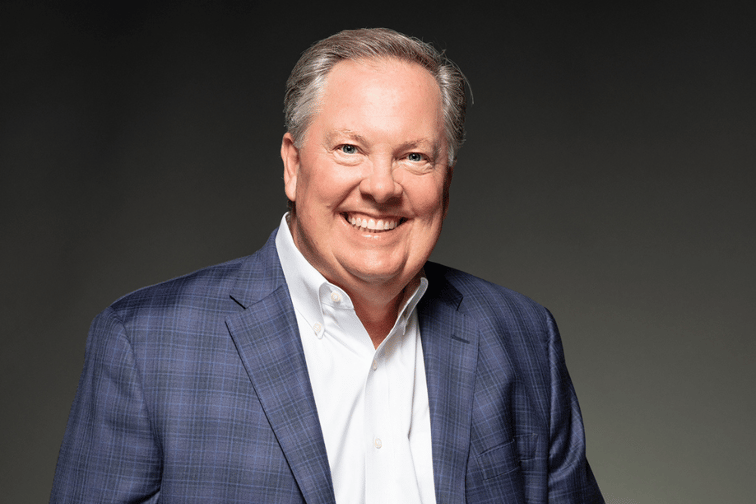

Top 25 broker Higginbotham may be a well-known acquirer, but deals cannot come at the expense of organic growth and retention, as per its CEO.
“I’ve always had a saying that when growth stops, decay begins,” Higginbotham CEO Rusty Reid told IBA.
The business grew revenue 27.5% from 2022 (brokerage revenue: $576.5 million) to 2023. It expects to see a 20% or more boost year-over-year in 2024.
In addition to deals, recruiting young and fresh talent and prioritizing retention have kept the 75-year-old broker’s growth ticking over and aided its ability to offer extras that clients want. In some ways, it’s a self-perpetuating circle.
The average industry retention rate is around 84%, but as per Reid “our firm’s on the high side” of the industry norm – the CEO cited a low-to-mid 90s range as a “really good” performance.
“Unless you have some level of M&A strategy, or good producer recruiting, you’ll be doing a lot of paddling just to stay even,” Reid said.
Those insurance brokers that find themselves battling a retention challenge can find themselves carving away expenses, leaving them less equipped to do that little extra that a client wants.
So, how does Higginbotham stay on top?
Looking past soft and hard market and wider economic dynamics is one key tenet for Reid and his team.
“I’ve got a number of friendly competitors in this space, and we talk frequently,” Reid said. “It’s interesting how they’ll make decisions based on market conditions, and rightly or wrongly, I’ve never done that – I’ve always said, operate the business like you operate it and be consistent, be steady and faster at what you do.”
Value-adds like risk management and employee benefits support keep clients coming back. The Fort Worth, Texas, broker’s leadership team also prioritizes being hot off the mark to fix problems flagged in the field.
“With my group, if you put it on the agenda, by next quarter there ought to be a strategy in place where you’re resolving what was broke, because you might get hung if you leave it another quarter,” Reid said.
Nurturing and attracting talent through thick and thin has proved a key organic driver for the firm. In a given year, up to three tenths of new revenue is driven by recent hires. The broker, which has offices across 16 states, runs an initiative called Higginbotham University.
“Organic growth plays a huge role, and our new class of producers that come in every year represent somewhere in any given year between 20% and 30% of our new revenue,” Reid said. “Not only is it solving a perpetuation problem, which our industry has been awful at solving, it’s really helped us bring our average age way down and it’s a key driver of our organic growth – particularly in and around new business.”
Employee entrants to the Higginbotham University program are typically recent graduates, second jobbers or members of the carrier community. Dependent on experience, they spend up to nine months learning and being mentored.
“You’ve got to give them a longer timeline,” Reid said. “So many people in our industry say, ‘hey, you’re going to come in, you’re going to get two weeks to two months of speed training, and then we’re going to throw you to the wolves’.”
Insurance is facing up to a talent challenge, with up to 400,000 experienced staff set to age out by 2026. Investment in youth has already plugged gaps for employee-owned Higginbotham, and, at times, the broker has been creative when practiced talent has bid goodbye. For example, a retiring South Texas producer’s book was split into three and distributed between fresh talent with different traits and skillsets.
Ensuring young people get the resources they need to start their careers is key to a business’s survival and ability to court clients in the long run, Reid pointed out.
“Particularly when you look at a hard market, you’ve got to have something that differentiates you from your peers – if you don’t have that, then you’re just another broker walking in the door,” Reid said. “If you know the old adage, you may win the deal this year on price, but guess what, you’re going to lose it next year because you’re really bringing no value above and beyond just that one renewal.”
Outside of organic growth and retention, Higginbotham has continued to acquire businesses across its core markets in the lower US, stretching from California to Florida. Among its 2023 buys were Texas-based Marshall Young Insurance, South Louisiana’s Bourg Insurance, and outlier Ohio’s Botson Insurance Group of Avon.
Broker deals slowed in 2023 following a private equity (PE) deal rush in the preceding years. But Reid said he has witnessed multiples remaining “pretty strong” despite rising interest rates and a shrinking pool of buyers.
The “scarcity factor” remains when it comes to good brokers, Reid said, with some firms continuing to snap up revenue for “the sake of buying revenue and trying to have a financial arbitrage play, versus building a sustainable business”.
Got a view on Higginbotham CEO Rusty Reid’s talent and retention strategy? Leave a comment below.
